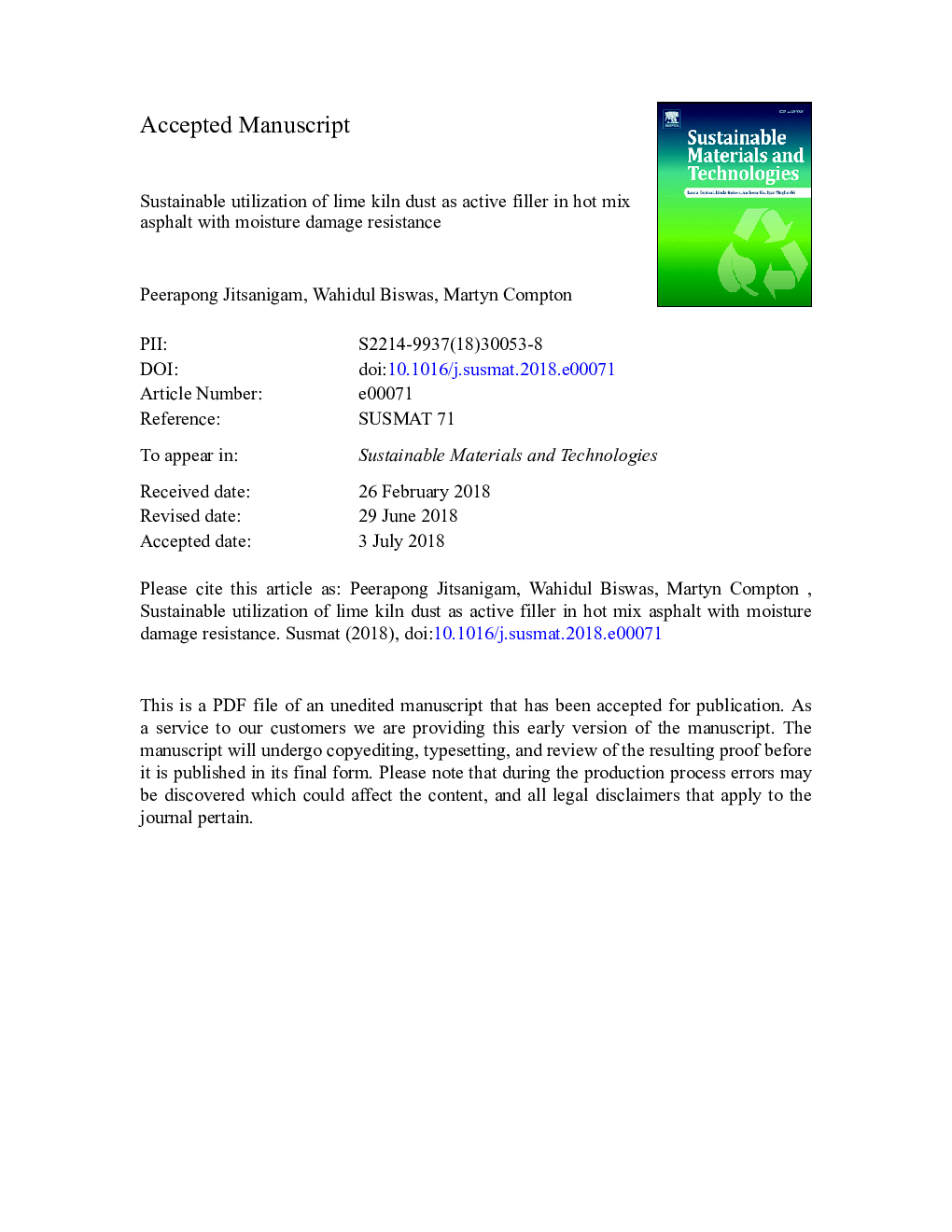| Article ID | Journal | Published Year | Pages | File Type |
|---|---|---|---|---|
| 7228323 | Sustainable Materials and Technologies | 2018 | 35 Pages |
Abstract
The Australian flexible road pavement network is experiencing a considerable degree of reveling and stripping damage in association with moisture. The next generation of hot mix asphalt (HMA) mixtures in Australia needs to have excellent engineering properties as well as higher resistance to moisture damage. Hydrated lime (HL) with a relatively high content of active lime is used in HMA mixtures to improve engineering properties, and particularly to enhance the resistance of HMA mixture to moisture. HL is currently considered a superior mineral filler to crushed rock baghouse dust but it is commercially produced and relatively expensive. Lime kiln dust (LKD) is an industrial by-product which has hydrated lime HMA filler-like properties with similar fineness and a relatively high content of active lime. The lime components in LKD assists in promoting resistance to the stripping common in siliceous acidic aggregates. This project aims to determine an optimum proportion of LKD in an LKD-asphalt binder mixture, based on the properties of viscoelasticity and aggregate adhesion. Dynamic shear rheometer testing and rolling bottle tests were used to evaluate the properties of the LKD-asphalt binder mixtures with varying LKD content. The test results indicated that a 50% LKD content in the LKD-HMA binder mixture provided superior viscoelasticity properties., an acceptable adhesion of asphalt to aggregates was also observed. Last but not the least, a 'cradle to gate' life cycle assessment was carried out to capture the benefits of the use of LKD by-product. This showed that GHG emissions and embodied energy demand could potentially be reduced by 18.5% and 2.4%, respectively if a 50% LKD asphalt binder by mass mixture was used in the LKD-HMA mix.
Related Topics
Physical Sciences and Engineering
Energy
Renewable Energy, Sustainability and the Environment
Authors
Peerapong Jitsanigam, Wahidul K. Biswas, Martyn Compton,
